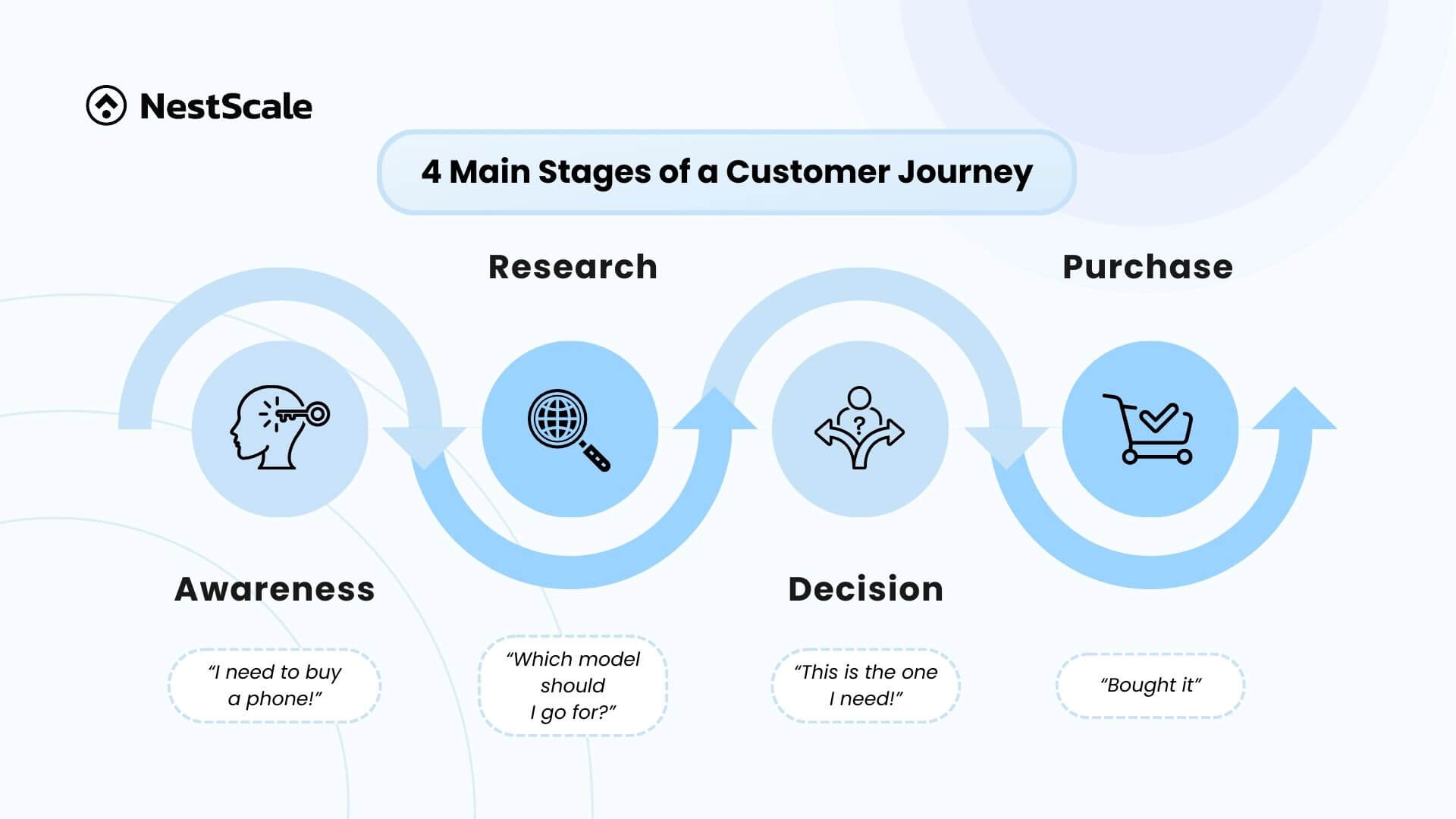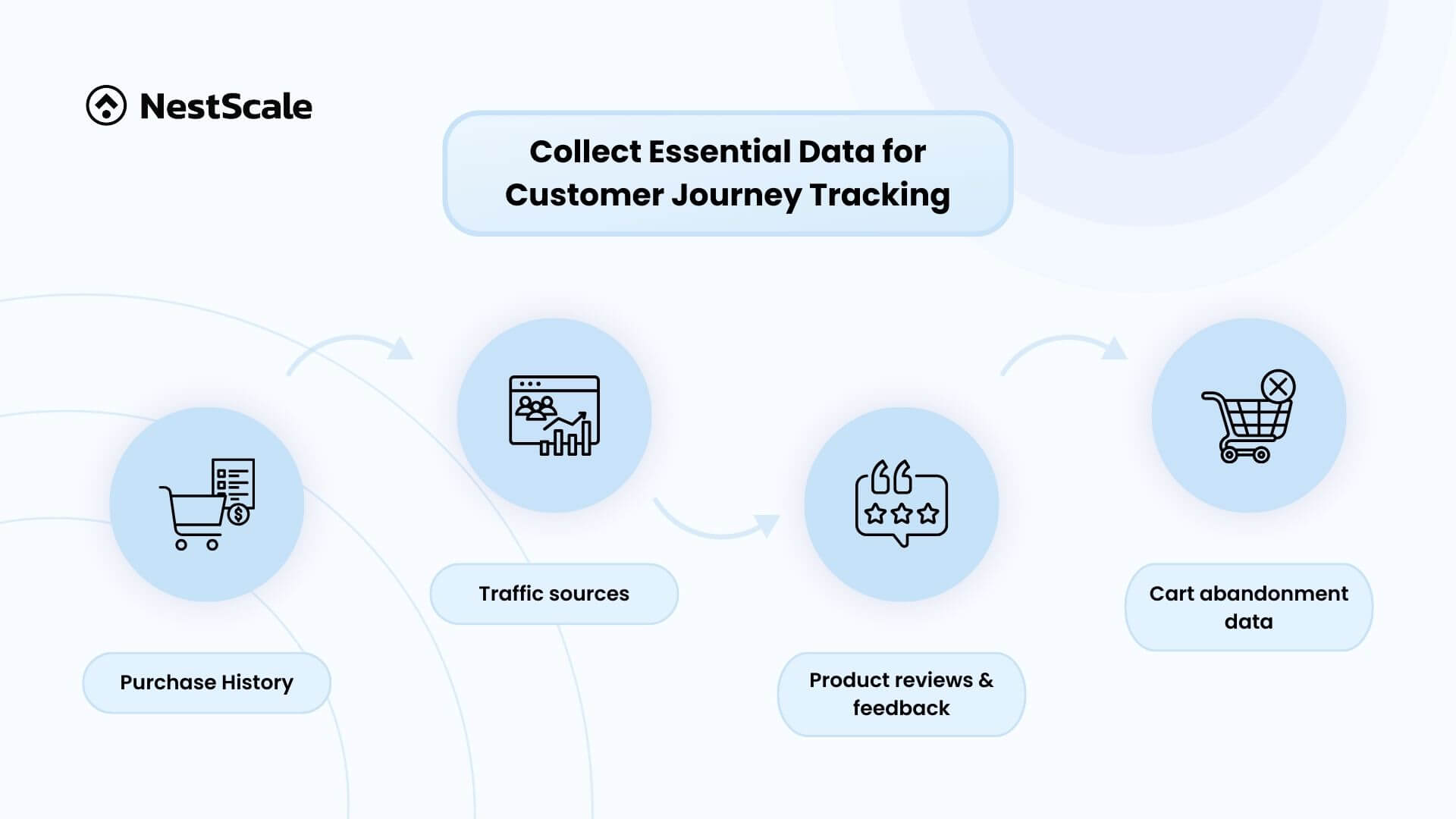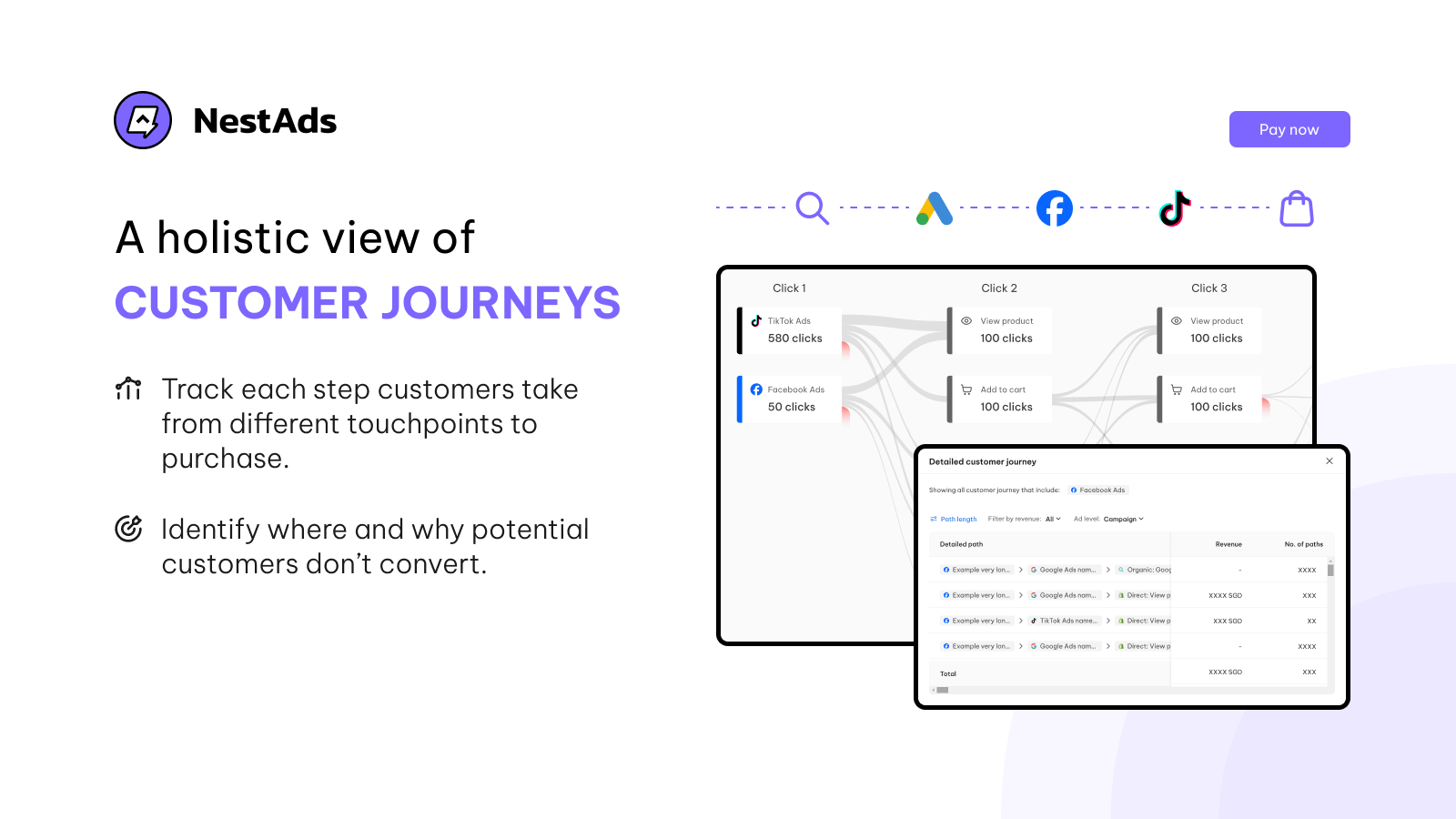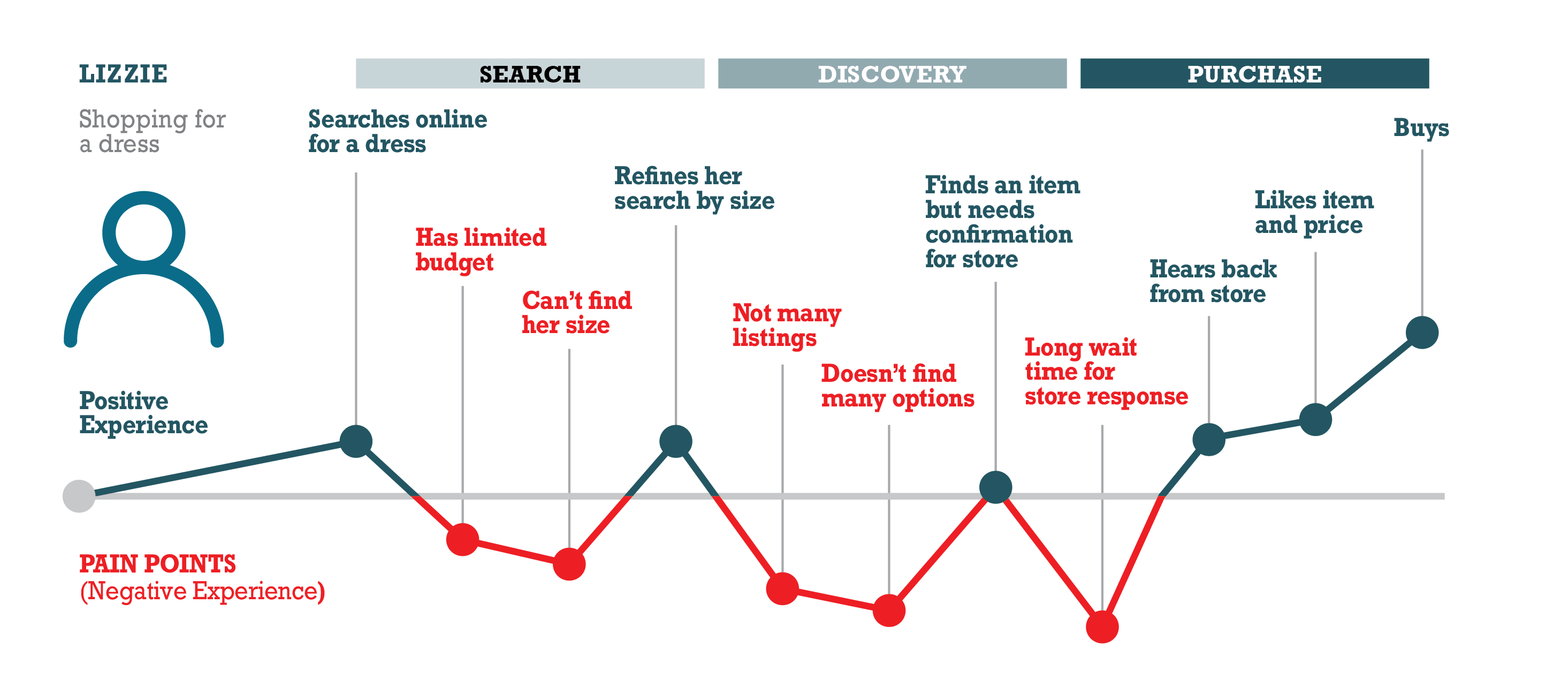If you’re running an eCommerce business, you know that customer journeys are more complex than just a quick purchase and goodbye. These days, customers go through a series of steps before, during, and after buying a product. From the first time a customer discovers your brand to post-purchase follow-ups, each stage has its own role in keeping your customers engaged and building loyalty.
Smart merchants understand that every touchpoint matters. So, overlooking any stage in this journey means you’re handing your competitors an easy win, as they’ll jump at the chance to meet your customers’ needs where you didn’t.
Are all those things still a bit unclear to you? Making this blog to the end, we’ll cover you with the essentials of customer journey tracking, breaking down every stage, explaining why it matters, and walking you step-by-step through how to track the journey to grow your business at every touchpoint.
Understanding customer journey tracking
First, you need to understand customer journey tracking right and the purpose of it.
What is customer journey tracking?
Customer journey tracking is the process of following the series of steps a customer takes, from the moment they identify a need or problem to when they discover, interact with, and eventually decide to buy from your brand. Basically, a tracking tool can capture this journey and display it visually on a customer journey map.
Every interaction, from how easy it is to find information, to how clear the pricing is, or even the tone of customer testimonials, shapes the users’ emotional connection to your brand. Eventually, they come to the final decision if your product meets their needs.
If the experience has been positive with your brand, they’re likely to buy. This journey of experiences and emotions is what makes loyal customers, not just one-time buyers.
What are the major stages to track in the customer journey?
Generally, a traditional customer journey goes through 4 main stages:

However, currently in eCommerce landscape, customer journeys are diverse. Some journeys are long and complex, while others are quick and straightforward. They are often influenced by factors like the customer’s specific goals, knowledge, or habits.
Each customer’s journey is unique, shaped by their personal motivations and reasons for connecting with your product. Not every customer approaches or uses your product in the same way. With a thousand customers, there may be dozens or even hundreds of distinct customer journeys. You don’t need to specify every path, but it’s a must to define the most common ones that go well with the majority of your target audience.
Why customer journey tracking is important to your brand?
I’m pretty sure when you understand “What is customer journey”, you already have the answer for why it’s important to your brand.
So in a nutshell, we want to emphasize these 3 points as to why customer journey tracking matters:
- Resonating with customer goals: The customer journey is tied directly to solving the customer’s problem or goal, not just the purchase itself. Therefore, when you understand and support this journey, what you aim for is to retain them and keep them coming back to your brand (instead of your competitor).
- Influence of touchpoints on customer experience: Every step and interaction a customer encounters, whether with your brand, customer service, or third-party reviews, affects their overall experience and their likelihood to return or recommend your brand.
- Emotions throughout the journey: Customers experience mixed emotions, from excitement to doubt along the buying journey. Thus, positive experiences create satisfaction and loyalty, while negative ones can form a bad brand image and even lead to negative word-of-mouth.

Main steps in customer journey tracking
First, before you do the customer journey tracking, you need to specify these questions, so the process will be much easier:
1. Who is your customer persona? (Consider their age, profession, interests, habits, etc.)
2. What final goal does your product help your customer solve or achieve?
If you already have the answer, let’s come into practice.
1. Collect essential data for customer journey tracking
Once you clarify your product & TA well, collect a few pieces of information to assist you in tracking your brand’s customer journey:

Purchase history
Sources of info: eCommerce platforms (Shopify, WooCommerce, Magento), POS systems, and CRM software (HubSpot, Salesforce).
Insight: Understand which products or categories lead to repeat purchases, how long it takes customers to make a purchase decision, and what drives higher-value orders.
Traffic sources
Sources of info: Google Analytics, Facebook Insights, and social media analytics.
Insight: Discover which channels bring in high-quality traffic and potential touchpoints, helping you understand the start of many customer journeys and where to focus marketing efforts.
Product reviews & feedback
Sources of info: Review platforms (Trustpilot, Yotpo, Google My Business), social media, post-purchase surveys, and customer service data.
Insight: Understand which aspects of the product or experience fulfill or not customer goals, giving you a view of satisfaction levels across different journey stages.
Cart abandonment data
Sources of info: eCommerce platform analytics (e.g., Shopify’s abandoned cart reports), Google Analytics, and retargeting tools like OptiMonk and Klaviyo.
Insight: Recognize barriers to conversion, such as unexpected shipping costs, complex checkout processes, or unclear return policies.
2. Identify key touchpoints
With your data in hand, outline each interaction a customer has with your brand, starting from awareness and progressing through to post-purchase:
- Map out each stage: Break the journey into distinct stages, like awareness, consideration, conversion, and post-purchase. Each stage will contain different touchpoints.
- List the key interactions: Identify specific actions at each stage, such as viewing an ad, visiting a landing page, reading product reviews, and reaching checkout.
- Validate with data: Use the insights from your data to confirm which touchpoints are significant, as these are often the spots where customers engage most actively.
As you specify these touchpoints, you can better understand the journey stages and how each interaction moves a customer closer to purchase or retention.
3. Weight the impact of each touchpoint
After identifying touchpoints, you should evaluate the influence of each one to allocate resources effectively:
- Apply attribution models: We suggest using attribution models to understand the importance of each of your touch points. Specifically, multi-touch attribution models can reveal the relative importance of each touchpoint in driving conversions.
- Examine conversion and engagement metrics: Look at which touchpoints lead to high-impact actions, such as sign-ups or purchases, and those that tend to lead to drop-offs.
- Assess customer sentiment: Touchpoints with positive feedback or high engagement rates may have greater influence and can guide improvements to encourage more conversions.
Weighting touchpoints shows where to focus your efforts. Thus, you can refine the journey by emphasizing influential interactions and addressing weak points.
4. Visualize your customer journey
Now, put it all together into a customer journey map that displays each touchpoint’s role in the overall experience.
You can do this manually with the most basic tool like a spreadsheet, but we recommend using an automated tool to save your time & effort at this stage.
Important notes for customer journey tracking
When you collect data and execute your customer journey tracking, here are a few things you need to keep in mind to do it more effectively:
- Always make use of your first-party customer data.
- Consider where your competitors may join in your brand’s customer journey.
- Focus on how the journey ends with a completed goal, not a completed purchase.
- Use real-time tracking for an active customer journey tracking strategy.
- Avoid making assumptions about your customer journey.
Tracking the customer journey can be quite complex, especially during the data collection process. To do it effectively, you need accurate and comprehensive data, a tall order if you’re doing it manually. Moreover, if your brand is running ads, it becomes even more complicated.
That’s why we recommend complementing a solution that can save eCommerce brands significant time and effort, a customer journey tracking software. This can streamline data collection & analysis, and make your entire process far more efficient and reliable.
So, in the following section, we’ll show you how you can implement customer journey tracking with software. Thus, you can simplify this whole process.
How does customer journey tracking work in NestAds?
Here’s how customer journeys are visualized and presented in NestAds’ interface.

This visualizes how each ad platform influences your sales and the association between touchpoints in the aggregated customer journey.
Based on this, you can assign every advertising channel to the proper stages of the marketing funnel and make relevant ad strategies for each channel.
If you want to explore NestAds further, we have a 6-minute video to explain about fundamentals of NestAds’ customer journey. You can check it right here:
Besides, to see how NestAds’ customer journey works specifically for your brand, you can book a demo with us to get expert advice to unlock the full capability of this feature to grow & scale your brand.

FAQs
What are key eCommerce metrics to track along the customer journey?
Basically, at different stages of your customer journey, you should track and keep an eye on specific key eCommerce metrics as follows:
| 1 – Awareness | 2 – Consideration |
| Impressions Reach Engagement rate Social Media mentions | Website traffic Bounce rate Time on Site Pages per Session Conversion rate |
| 3 – Purchase | 4 – Post-Purchase |
| Sales Average Order Value (AOV) Customer Acquisition Cost (CAC) Cart Abandonment rate Return rate | Customer Lifetime Value (CLTV) Net Promoter Score (NPS) Customer Satisfaction Repeat Purchase rate |
To understand how these metrics work, you can refer learn these 15 important eCommerce metrics & KPIs to track and get advice to monitor them effectively.
What’s the difference between customer journey and marketing funnel?
While both concepts are crucial for understanding customer behavior and optimizing marketing strategies, they have distinct approaches:
| Customer journey | Marketing funnel | |
| Focus | Customer’s perspective and experience, including both emotional and rational factors. | Actions a company takes to influence customer behavior and move them through the buying process. |
| Perspective | Customer-centric view, focusing on the customer’s needs, motivations, and pain points. | Company-centric view, focusing on the steps a company takes to attract, convert, and retain customers. |
| Structure | More likely to change and follow cyclical patterns, as customers may revisit stages or take unexpected paths. | Typically linear, with stages like awareness, consideration, conversion, and loyalty. |
What are the best practices to improve your customer journey tracking?
Here are some of our tips to further enhance your customer journey tracking:
- Integrate feedback mechanisms at key stages: You can add brief feedback prompts after major touchpoints like checkout or post-purchase. For example, use post-purchase surveys or ask for ratings on specific aspects like delivery speed or product quality. This data can pinpoint areas for improvement.
- Reduce friction at key conversion points: It’s essential to analyze drop-off points like checkout, where customers may abandon due to extra fees or a lengthy process. Then, try to simplify the checkout process, clarify shipping details upfront, and reduce the number of steps for a smoother journey.
- Use multi-touch marketing attribution: Use a multi-touch attribution model to give credit to each touchpoint in the customer journey. By analyzing data from these models, you can see how various channels (like paid ads, email marketing, or social media) contribute to conversions.
Continuously monitor and refine: Schedule regular reviews of your customer journey data, particularly at important stages like discovery and checkout. Hence, you can adjust your tracking strategy based on market trends and make improvements if needed to stay competitive.




















































